Acoustic spectrum of a drone
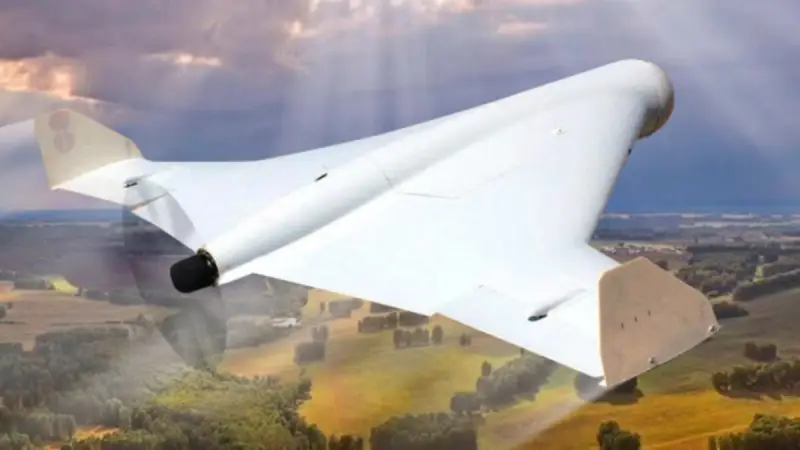
The Internet is full of recordings of the buzzing of quadcopters, the howling of approaching Geraniums, and the rattling of Orlans. These recordings are made in a compressed MP3 or similar format, which may lose some detail due to data compression, but for simple reference purposes they are quite suitable.
Let's start with recording a quadcopter
The recording signal in time representation (this is what can be seen on an oscilloscope) looks, as always, unclear.
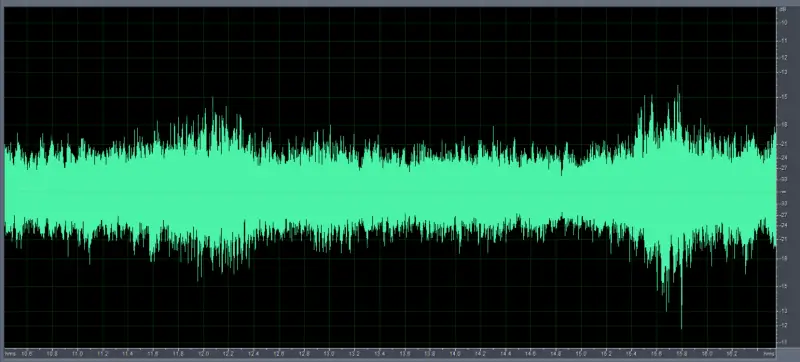
At higher magnification, an unstable periodicity of the overall amplitude can be traced.
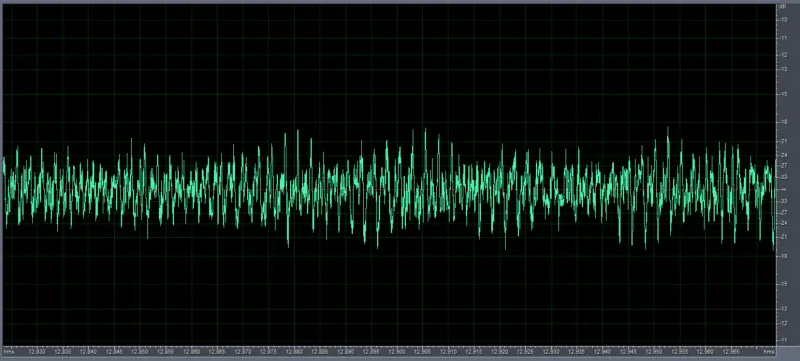
But in order to understand what’s inside, you need to look at the spectral image. In general, it looks like this.
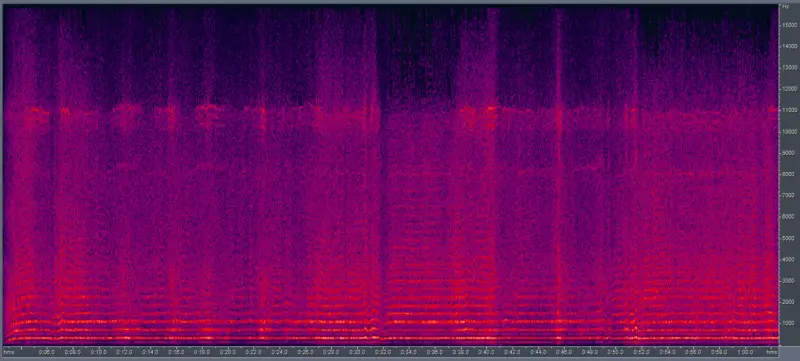
Horizontal is time, vertical is frequency, and brightness is the amplitude of the signal at a given frequency at a given moment.
Here we see a bunch of equidistant parallel lines. These are the harmonics of the audio signal. The distance between them in such signals is called the fundamental tone. Obviously, the main tone is some kind of product of engine speed and the number of propeller blades, with possible additional influence on the interaction of the blades of adjacent propellers. You can see how the engine speed changes during maneuvering.
If we make a slice of the spectrogram, then in a separate section we can see the following.
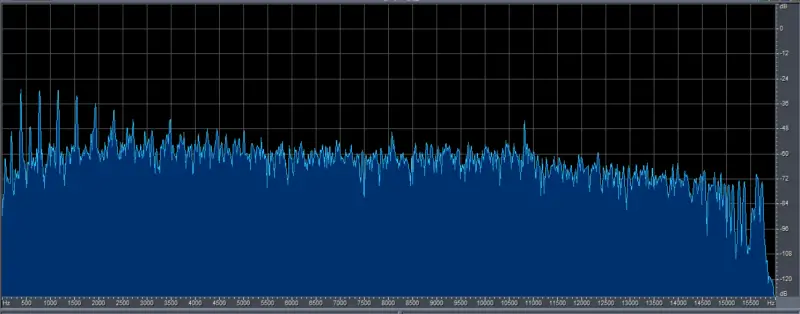
There is some ambiguity here. Either here on the left side there is a strong division into even and odd harmonics, or something from subharmonics has come out there.
Further spectral analysis can be introduced both to increase the frequency resolution and to reduce it. In the first case, this will give us better frequency resolution at the expense of time resolution. The reverse action is also valuable. With increased frequency resolution, it can be seen how, when maneuvering the copter, this is done due to the imbalance of engine speeds, which manifests itself in the splitting of frequency bands.
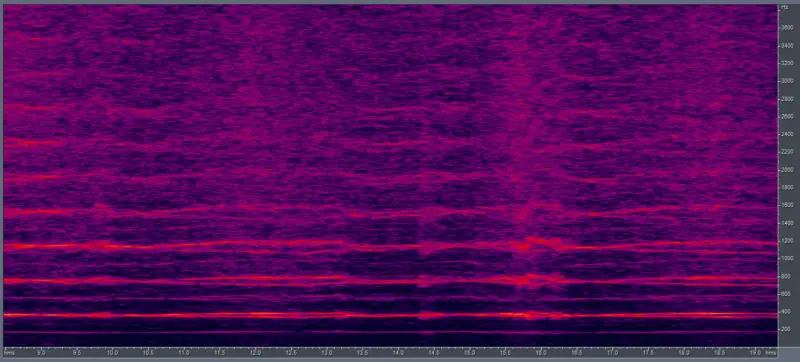
By lowering the frequency resolution, we can clearly see temporal details.
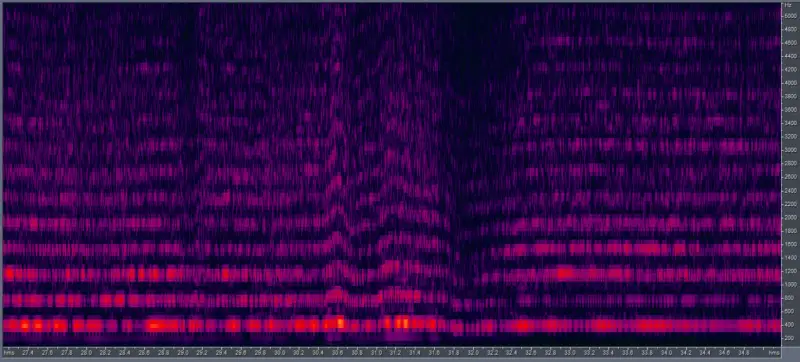
It can be seen that the amplitudes of the harmonics flicker.
Acoustic trace of "Geranium"
Here we see a high frequency resolution spectrogram of the approach and final peak drone.
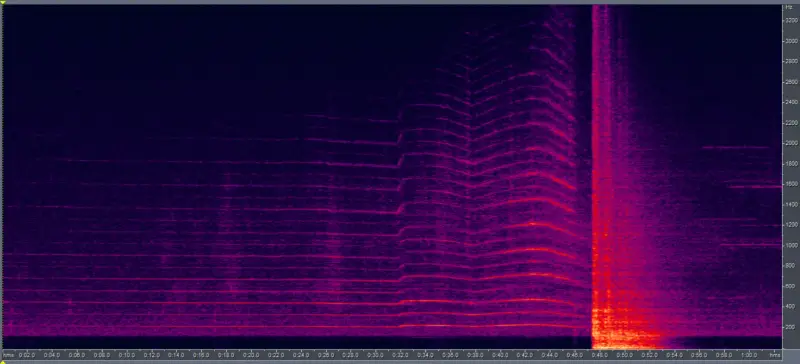
There are a lot of interesting things in the picture.
Let's start with the fact that the distance between the spectral rods is 113 Hz (before the dive section), and the fundamental harmonic spectral rod is not visible due to filtering of the microphone signal from the mobile phone. This frequency is the product of the engine speed, the number of cylinders, the coefficient of the exhaust phase distribution and the engine clock rate.
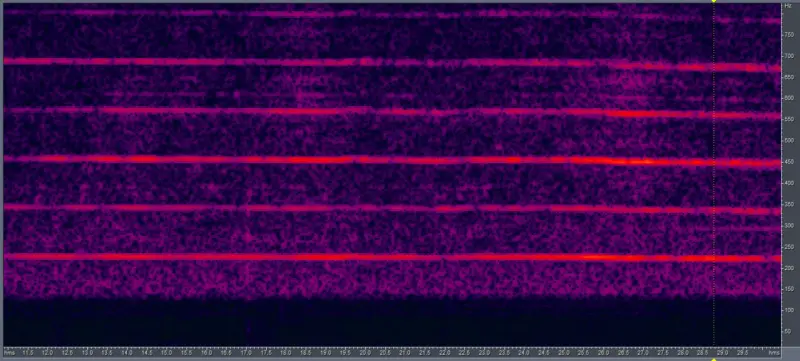
It is worth noting that even harmonics are larger in amplitude than odd ones.
For those who have experience in electronics, it should be clear which periodic signals produce a surge at even harmonics.
With increasing time resolution (and decreasing frequency resolution), it is clear that
that the harmonic amplitudes are unstable.
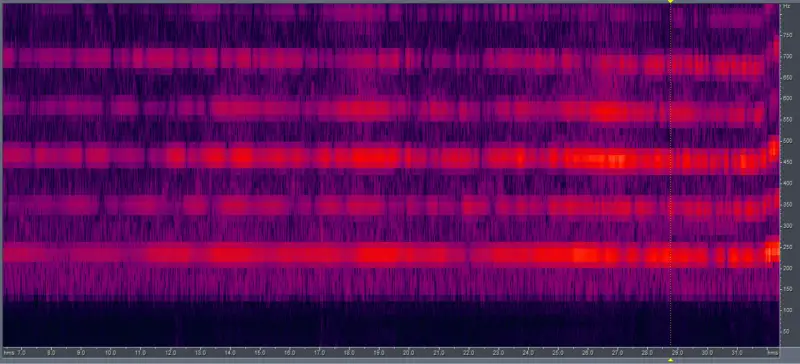
If we had to detect the approach of such a drone, then it would have to be done in the low-frequency part of the spectrum, since the main energy of the engine sound spectrum is concentrated there. Our ear is extremely insensitive to the low-frequency part of the spectrum. Our microphones, obviously, are also not designed for high parameters to work in a zone close to infrasound.
Meanwhile, sound at these frequencies experiences minimal attenuation and can travel over long distances (elephants and whales know this well).
Well, now let's take a look at "Orlan"
Here, too, the even harmonics of the fundamental tone stand out, in this case 68 Hz. They are slightly larger than even numbers, at least in the lower frequency range.
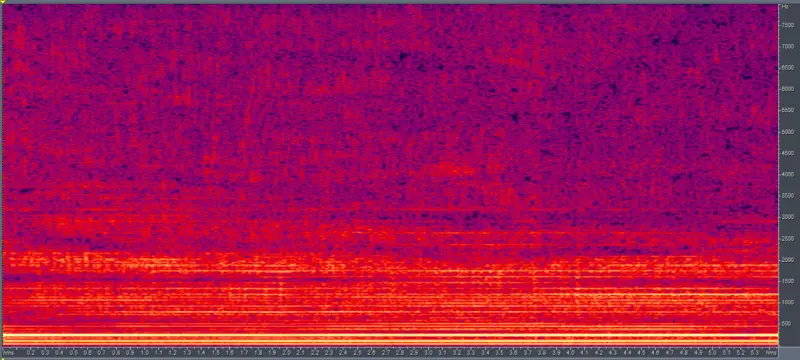
The fairly rich spectrum here is explained by the fact that the recording was made before the drone took off at some edge of the forest and at a short distance. The entire upper part of the spectrum has not yet had time to evaporate.
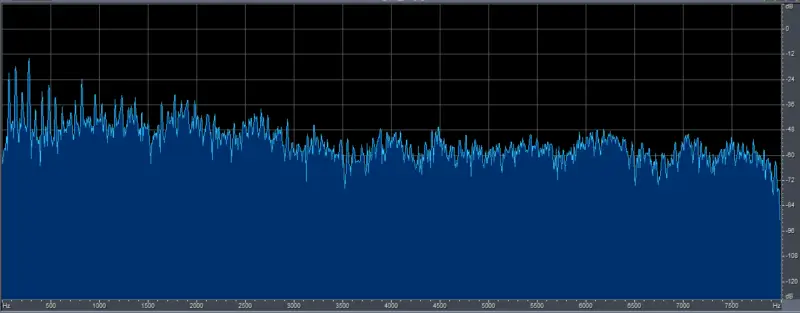
The value of this recording is that the first harmonic has not been removed by filtering.
Using a logarithmic frequency scale, the lowest part of the spectrum can be identified.
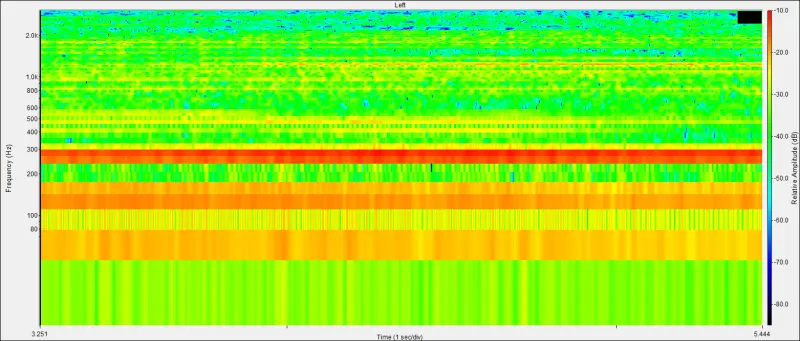
Here, fluctuations in the amplitude of the first harmonic (68 Hz) can be explained by the operation of the drone’s engine speed controller.
Some conclusions
1. The idea of detecting the passage of a drone by the acoustics it emits has been in the air for quite a long time. Recently there have been reports that in Ukraine such a network of 8 mobile phones has been built and is functioning. It is far from a fact that this Ukrainian network does not enter Russian territory. Moments of particularly intense ironing of our Ukraine aviation For example, I can tell by the noise of heavy aircraft at night or in the morning.
Although I have no illusions about the resistance to hacking of computers or smartphones, it is possible to insert specific code into smartphones already at the Google Play level. For example, all the basic elements for initial acoustic processing are available in popular voice messengers. If we limit ourselves to constant processing of a limited frequency range of up to 1,5–2 kHz, this will not even create a significant load on the processor.
2. In addition to the task of detecting enemy drones, the opposite goal of reducing the acoustic signature of our drones is also possible. For example, in electronics, when it is not possible to reduce the amplitude of spectral lines, you can try to smear it and reduce the properties by which the engagement will be made.
3. What can be gained from all of the above depends largely on those who will do it. I mention this because from 1983 to 2012 I worked at research institutes and design bureaus and saw enough of the realities there, where the local public was primitively and stupidly sawing through budgets.
Now I work in a large private company. From time to time, this colossus - our company - got involved in very non-trivial technical issues and problems... At these moments, it clearly began to feel like time was ticking. In the first phases of solving such complex problems, horror was clearly visible in the eyes of the specialists involved...
But it is precisely such tasks that give a great chance to those who can solve problems quickly, highly efficiently and with high quality.
Information